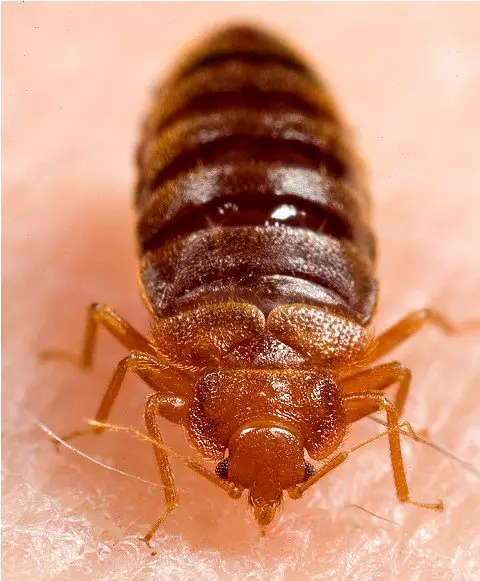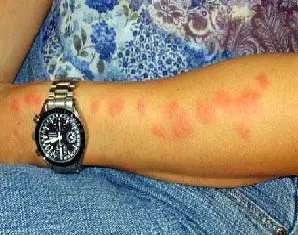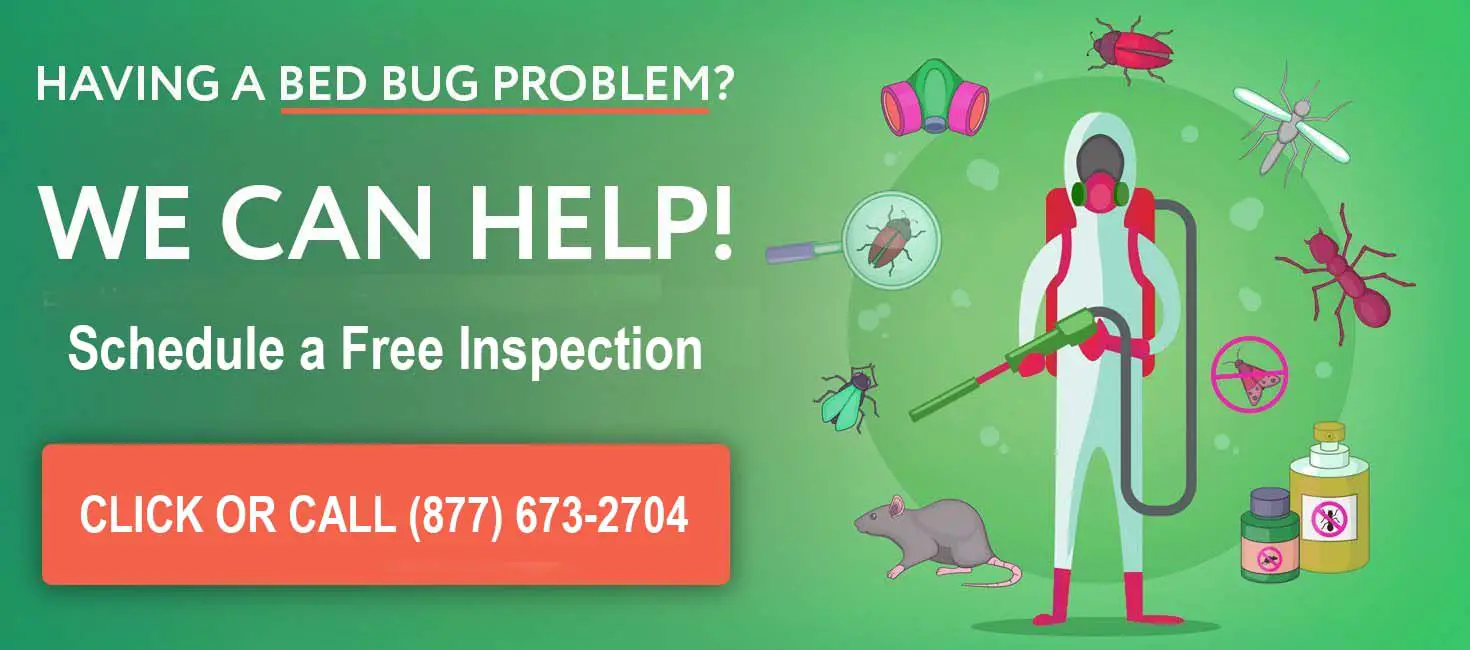" The Bed Bug Epidemic is a global phenomenon according to a 2010 survey by the University of Kentucky and the NPMA (National Pest Management Association). The study points out that exterminators find themselves receiving more and more calls each day, with most calls concentrated in urban and suburban areas. Reasons for the growth in complaints include common international travel, the lack of easy to implement treatment methods, and a lack of education on how to protect yourself against an infestation. The same survey indicates that the majority of exterminators believe that bedbugs are more difficult to treat than termites, ants and cockroaches. "
history
According to studies we know they have been a plague for man kind for centuries (even back to the last ice age in Middle East caves - 10,000 years ago). They are even referenced by Aristotle. Before WWII, they were a constant problem in homes(they could, which is the origin of the rhyme "don't let the bed bugs bite."
Further proof of a past worldwide epidemic is that every language has a word to described the insect. In middle English, they are referred to as bugge, which means ghost or wraith. This makes sense since bedbugs usually come out at night.
 Title page from "A Treatise of Buggs"- 1730
Title page from "A Treatise of Buggs"- 1730(Source:Usinger 1966)
In Sweden, the largest pest control company is named after the insect itself, Cimex. In England in the 18th Century, "professional exterminators concocted secret formulas to destroy bugs" (Usinger 1966). At the time, there was a company that described itself as "bug-destroyers to Her Majesty and the Royal Family." People often switched to iron beds instead of wood, since iron is not as attractive as wood to bed bugs.
In the late 19th century (1875), the pesticide DDT was used to kill all kinds of insects including bedbugs, cockroaches, fleas and mosquitoes. This was the primary method for killing bed bugs in the 1940's and 1950's. It's use declined as their resistance to the insecticide increased. The insecticide was banned in 1972 due to a link to cancer in humans.
Insect treatments that replaced DDT for insects such as cockroaches, did not kill bedbugs, allowing the population to grow. Even if DDT were allowed to be used today as a response to the bedbug problem, it would not work as a recent University of Kentucky study on Bed Bug resistance (pdf download) showed that 95% of bed bugs in New York are now resistant to the insecticide. It would be more effective in other areas.
In the early 20th century (1901-2000), reports in London claimed 4 million people suffered from bed bug bites and 1/3 of the dwellings in Stockholm were thought to be infested (IPM Practitioner 4/2007)
Today's Epidemic
The current epidemic began in the 1990's as International travel increased combined with the ability of bed bugs to not be affected by insecticides used to kill other insects.
Places that cater to transient populations such as dormitories, hotels, halfway houses, summer camps, airport lounges, conference centers, restaurants and temporary shelters are at risk for bedbugs.
Infestations are rapidly increasing in number and are a worldwide problem. For example, in Australia, between 1999 and 2006 there was exponential growth in the number of new infestations equating to an extraordinary increase of 4,500% (Doggett and Russell, 2007).
In the United States, according to the NPMA, the average exterminator receives 1 to 2 bed bug related calls per week (2010) vs. prior years where they would receive 1 to 2 calls a year. Most bed bug infestations are reported in urban and suburban areas, as well as other places where there are transient populations such as hotels, dormitories and hospitals.
In New York the growth in complaints is alarming:
Bed Bug Related Calls to NYC 311 Information Hotline
 Bed Bug Biting Skin
Bed Bug Biting SkinWhy is Bed Bug Treatment so Difficult?
Bed bugs are very resilient and difficult to control, even for professionals. They are adept at hiding and have rapidly developed resistance to many pesticides. For example, as mentioned above, DDT, a banned chemical credited with practically ending any past epidemic in the Unites States, has been shown in lab test to only kill 5% of bed bugs found in New York City, with the rest completely resistant (University of Kentucky).
Bed bug control requires a treatment strategy utilizing multiple chemical and non-chemical techniques. Bed Bug pesticides are often combined with other methods such as vacuuming, steam and diatomaceous earth to address an infestation.
bed bug infestation management
In today's day and age it is pretty difficult to get rid of bed bugs given the need to use multiple methods of pest control control instead of one method, such as the use of DDT.
Fighting an infestation involves multiple methods of pest control such as:
Does Temperature Effect Bedbugs?
Temperature does effect the rate at which they multiply, with ideal human temperatures matching the ideal temperatures for bedbugs. Bedbugs can move from egg to adult in 21 days at 86F (30C). At lower temperatures, 68F (18C), the can develop from egg to adult in 120 days. Their activity slows down between in temperatures lower than 55F (13C) and 59F (15C). However, bed bugs can adapt to cold weather and be active at 45F (7C).
Heat at temperatures between 111F and 113F (44C to 45C) will kill bed bugs and bed bug eggs.
How are Bed Bugs Spread?
Bed bugs need to be carried from one location to the next. They do not fly and they do not leap. They crawl through common small spaces and move at about the speed of an ant from one object to the next and tend to not move more than 100 feet in any direction. Many researchers suspect that global travelers are the reason why we are seeing the current epidemic. A traveler that may live in an infested hotel room or apartment could notice the bugs after their nights sleep and bring back bed bugs hiding in their luggage. When the luggage is brought home the owner may find insects in small spaces that are common for insects. This is why bed bugs are found at both expensive hotels and inexpensive hotels. Places where people constantly live, move in and out, and sleep such as hospitals, apartments etc. are particularly susceptible to bed bugs. Lower income apartments have found rapid growth of infestation because residents who live there are more likely to purchase or pick up free or used mattresses and furniture. For example a mattress that is discarded due to it being around or infested with bed bugs could easily be picked up by another home owner, thus spreading the bed bug infestation to many people.
In most cases, people are completely unaware that they are bringing home furniture, clothing, bedding, and luggage that they may find bed bugs in, on or around these pieces of furniture. In other cases they move through openings in walls to adjoining apartments. In fact, there is a 20% chance that bed bugs will move from an infested apartment to an adjacent apartment and a 7% chance that they will move to an apartment over or below the infested apartment.
Are Bed Bug Bites a Sure Sign of an Infestation?
Also, it is believed that 70% of the population shows no reaction to bedbug bites. Since bites are often the first noticeable sign of a bed bug infestation, you should look for human blood. An infestation can be found to grow unchecked and spread to many people and other areas of buildings. These individuals can then carry bed bugs to other locations such as theaters, hospitals, social service offices and other locations where they hitch a ride on another person who then carries the bedbugs to another home.
 Bed Bug Bites on Arm
Bed Bug Bites on ArmDo they Spread Disease?
Bed bugs do not spread disease. However, in allergic individuals the bedbug bites, when itched can become infected. A very small percentage of individuals can experience asthma or shock from the bites. A recent study (11/2010) has indicated that in hospitals there may be a connection between bed bugs and the spread of the MRSA infection in patients. This is a dangerous skin disease that is difficult to treat.
According to the NPMA study, bed bugs due lead to distress. According to the study, 99% of clients who have had bed bugs were “upset and concerned” and 77% said such customers were “very upset and concerned.”
Top Cities in the United States
According to Terminix, the top U.S. based on bed bug calls to the company include:
- New York
- Philadelphia
- Detroit
- Cincinnati
- Chicago
- Denver
- Columbus, Ohio
- Dayton, Ohio
- Washington, D.C.
- Los Angeles
- Boston
- Indianapolis
- Louisville, Ky.
- Cleveland
- Minneapolis, Minn.
Ohio was the single state with most bed bug related calls., Philadelphia and Detroit were also mentioned as having a significant number of calls.
How to Know if You Have an Infestation
Bed bugs are often confused with other insects such as young cockroaches and bat bugs. To be sure, bring a sample bed bug to a cooperative or county extension office. Call ahead to make sure that they have a staff entomologist (insect expert).
The Future of the Current Epidemic
There is not clear resolution to the growing epidemic. Many cities and states are just starting to adjust laws that govern landlord/tenant rights to include bed bugs. Others are using education to warn residents regarding bedbug protection methods.
Pest control firms are quickly getting up to speed on the latest chemical and mechanical methods of bedbug removal. The future however, is largely based on the ability to come up with either an organic or pesticide based method of killing bedbugs that provides lasting protection against these insects. Until then, the worldwide epidemic will continue to be a problem.
References for Bed Bug Epidemic:
National Pest Management Association
Connecticut Agricultural Experiment Station
Battling Bed Bugs in the USA
Potter, Michael F; Haynes, Kenneth F.; Romero, Alvaro
University of Kentucky
Ask a Question or Share Your Bed Bug Experience With Others
Do you have a question or great story about bed bugs? Share it!

